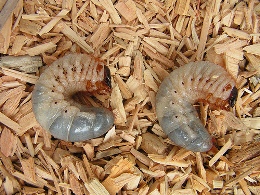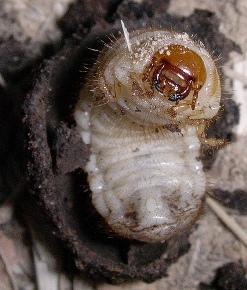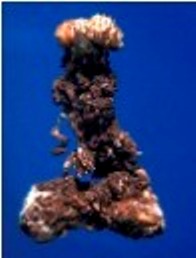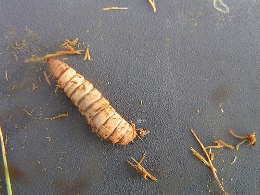Nutrition
What do I eat?
Cordyceps subsessilis is an
interesting eater. Alike to humans and other members of
the kingdom Animalia, it is heterotrophic, so it can't produc e
its own food, therefore has to aquire it by another means.
Unlike kingdom Animalia, however, Cordyceps subsessilis
digests then ingests the food. What this means is that it
excretes exoenzymes onto the substrate it is living on.
The exoenzymes then do the digesting themselves and then the
hyphae that are in the substrate reabsorb the enzymes and the
nutrients that came from the digested material.
e
its own food, therefore has to aquire it by another means.
Unlike kingdom Animalia, however, Cordyceps subsessilis
digests then ingests the food. What this means is that it
excretes exoenzymes onto the substrate it is living on.
The exoenzymes then do the digesting themselves and then the
hyphae that are in the substrate reabsorb the enzymes and the
nutrients that came from the digested material.
Since Cordyceps subsessilis lives on a scarab beetle larvae, that is what the hyphae dig into and excrete their enzymes onto to get nutrients. For at least a little while, the scarab beetle larva is still alive, so it is being digested without being able to do anything about it. Eventually the larva will die and Cordycpes subsessilis will continue to digest and take in nutrients from it.
 The host that Cordyceps subsessilis lives on would be
one of the beetle larva of the Scarabaeidae family. To understand more about
C. subsessilis, it is beneficial to learn about what the beetle larva
itself eats. The scarab beetle larva lives under the surface in the soil
of either decaying material or under plants. It may be able to eat the
decaying material, otherwise if it is under plants it eats their roots.
Many scarab beetle larvae are actually what cause a lot of plants to die from
dehydration when it gets really dry out. This happens because it eats the
farthest part of the roots and when the top-most soil dries up, the moist soil
underneath tends to be used. But if the roots are no longer in that soil,
the plant will whither for lack of water, and die.
The host that Cordyceps subsessilis lives on would be
one of the beetle larva of the Scarabaeidae family. To understand more about
C. subsessilis, it is beneficial to learn about what the beetle larva
itself eats. The scarab beetle larva lives under the surface in the soil
of either decaying material or under plants. It may be able to eat the
decaying material, otherwise if it is under plants it eats their roots.
Many scarab beetle larvae are actually what cause a lot of plants to die from
dehydration when it gets really dry out. This happens because it eats the
farthest part of the roots and when the top-most soil dries up, the moist soil
underneath tends to be used. But if the roots are no longer in that soil,
the plant will whither for lack of water, and die.
The scarab beetle larva is actually not too hard to digest and ingest. The larva does not have an exoskeleton like the adult form does. This means that the fungus does not have to wrestle through layers of tough chitin exoskeleton to get to the actual flesh of the larva, which makes the larva an easy target as a source of food.
There are other fungi, although immobile, that are also able to parasitize and feed upon other organisms that should have a bigger advantage on them. Some of these would include any fungus a part of the Cordyceps genus, numerous plants, and even some different species of nematodes are infected.
Another fungus that also parasitizes larvae of an arthropod would be Cordyceps sinesis. As you can see this fungus is also a member of the Cordyceps genus which means that a lot of the same information about C. subsessilis pertains to this species, also. According to Sung (and others) C. sinesis is a part of the Ophiocordyceps genus and parasitizes Lepidopteran larva unlike C. subsessilis. If you would like to learn more about this particular fungus, click here!
Hopefully, you are learning a lot about Cordyceps subsessilis! To continue your educationally experience, click here to continue on to the reproduction page.
If you have had your fill of learning about C. subsessilis, click here to go home!

